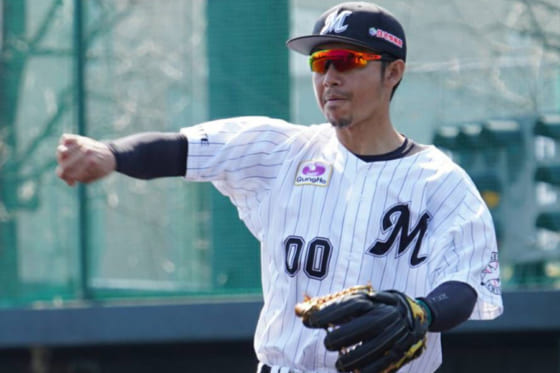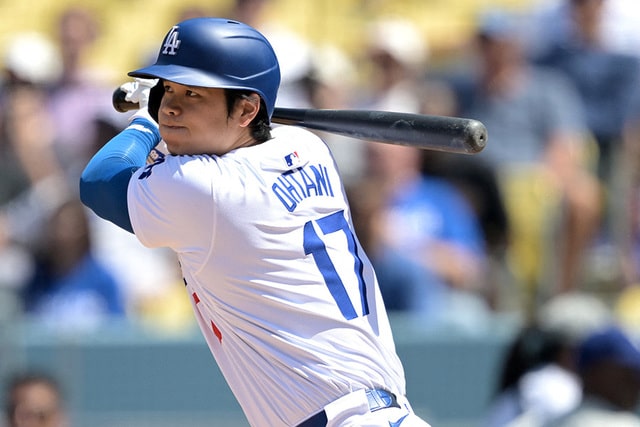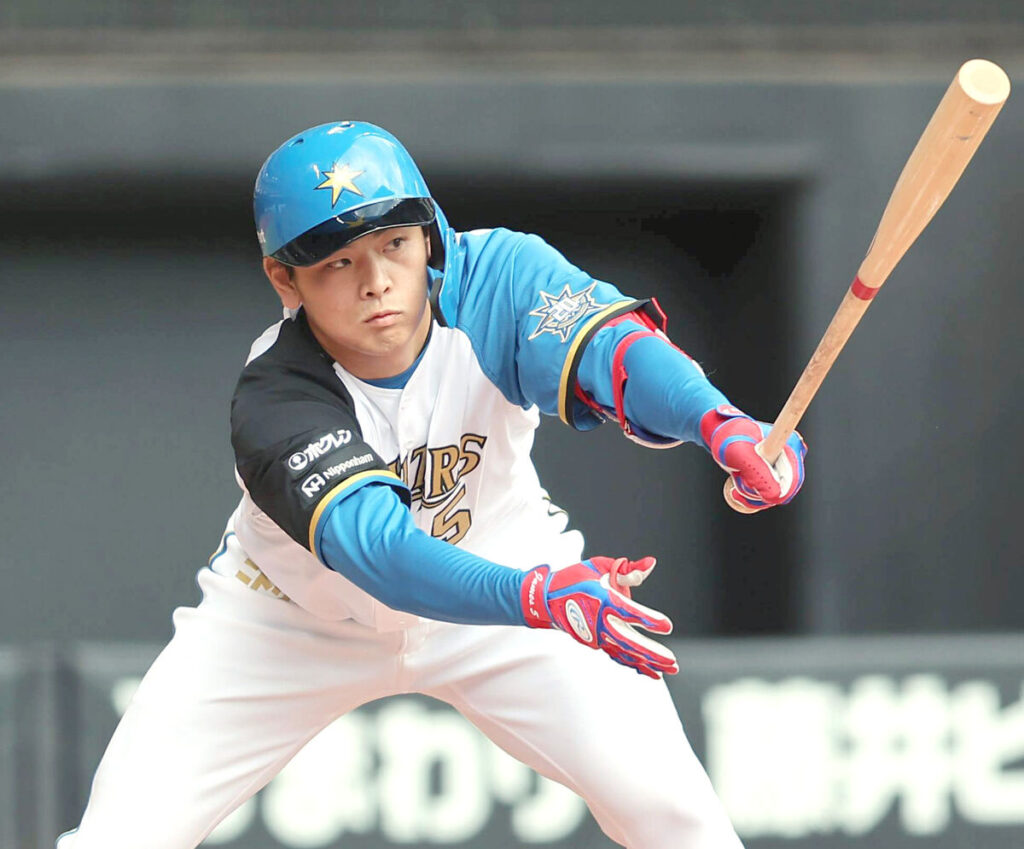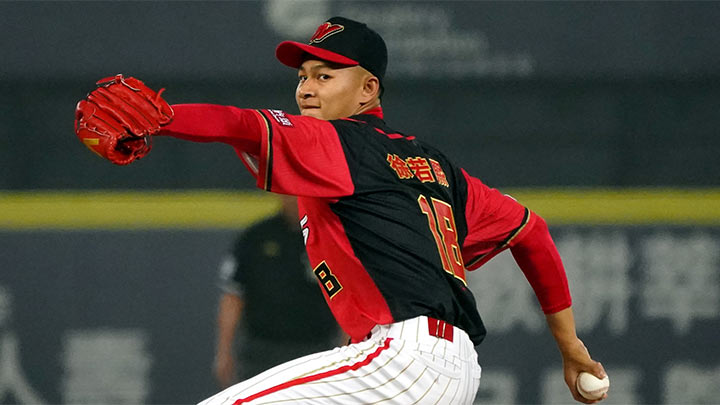
In baseball, the pitcher’s ball speed is one of the most important factors that greatly influence the flow of the game.
In particular, pitchers who boast the fastest pitches captivate the audience and are a fearsome presence for opposing batters.
In this article, we will thoroughly explain the fastest pitch speed in baseball.
We will introduce the fastest pitch records in Major League Baseball, Japanese professional baseball, and high school baseball, and explore what kind of training and techniques are required to achieve these fastest pitches.
We will also consider the impact of the fastest pitch speed on the game and future prospects.
Let’s start by looking at the definition of fastest pitch speed and how it is measured.
目次
- 1 What is the fastest pitch speed in baseball?
- 2 Fastest pitch in major league history
- 3 Fastest pitch in Japanese professional baseball
- 4 Fastest pitch in high school baseball
- 5 Training to achieve the fastest pitch speed
- 6 Relationship between pitch speed and pitching mechanics
- 7 The impact of the fastest pitch speed and future prospects
What is the fastest pitch speed in baseball?
In the world of baseball, a pitcher’s ball speed is considered one of the most important factors.
In particular, the fastest pitch speed is attracting attention as an indicator of a pitcher’s ability.
Here we will take a closer look at the definition of fastest pitch speed, how to measure it, and why pitch speed is important.
How is the fastest pitch speed defined and measured?
Fastest pitch speed refers to the fastest speed of the ball that a pitcher can throw.
This speed is usually expressed in miles per hour (mph) or kilometers per hour (km/h).
The fastest pitch speed is measured during games and practice and is used to evaluate pitchers and as a basis for scouts’ decisions.
Measurement method
-
Radar Gun: The most common method is to use a radar gun. A radar gun measures the speed of the ball at the moment the pitcher throws it and displays the exact ball speed. This makes it easy to measure the pitcher’s fastest ball speed.
-
Pitch Tracking Systems: In professional environments such as major league baseball, pitch tracking systems are used, including highly accurate technologies such as Statcast and Trackman, that provide detailed analysis of the trajectory and velocity of the ball, allowing for a comprehensive evaluation of a pitcher’s entire delivery.
-
Video Analysis: In some environments, video analysis is also used to measure pitch speed, using a high-speed camera to film the pitch and then using software to analyze the ball’s speed, resulting in highly accurate data.
Why pitch speed matters
-
Pressure on the batter: A fast ball puts a lot of pressure on the batter. The batter must make instant decisions to respond to the speed of the ball, which increases the chances of a missed shot or a strikeout. In particular, a pitcher with the fastest ball speed can put a lot of psychological pressure on the batter.
-
Reduced distance of hit balls: A high-speed ball also reduces the distance of hit balls. A fast ball makes it difficult for the batter to swing with the correct timing, resulting in more missed shots. This reduces the probability of a hit and creates an advantageous situation for the pitcher.
-
Widening the strike zone: Pitchers with fastballs can have a wide strike zone for hitters. This makes batters more cautious in order to deal with fastballs, which makes breaking balls like slow curveballs and changeups more effective. This allows pitchers to use a wider variety of pitches and confuse batters.
-
Excitement of spectators: High-speed balls are also a big attraction for spectators. Seeing high-speed balls at the stadium increases the excitement of the game and doubles the enjoyment of watching the game. In particular, the appearance of a pitcher who breaks the record for the fastest ball attracts the attention of the media and fans, and becomes a hot topic.
-
Player Evaluation: Velocity is an important factor in evaluating pitchers. Scouts and coaches value pitchers with a fastball and see them as promising players for the future. For players aiming to go pro, improving their maximum velocity is a key factor in determining the course of their career.
The fastest pitch speed in baseball is not just a number, but an important factor that greatly influences the flow of the game and the evaluation of a player.
Understanding this will help you appreciate its importance in baseball strategy and player development.

Fastest pitch in major league history
Major League Baseball (MLB) is the world’s top baseball league and has produced many famous pitchers who have made their mark in history.
Here we take a closer look at the fastest pitchers in Major League history and the latest fastest pitch records.
Fastest pitchers in major league history
-
Aroldis ChapmanAroldis Chapman is known as the fastest pitcher in the history of Major League Baseball. In 2010, while playing for the Cincinnati Reds, he recorded a ball speed of 105.1 miles per hour (about 169.1 kilometers per hour), surprising baseball fans around the world. Chapman’s fastball is characterized by its overwhelming speed and high release point, making it extremely difficult for batters to hit. His arrival set a new standard for fastballs in Major League Baseball.
-
Jordan Hicks Jordan Hicks of the St. Louis Cardinals is the second fastest pitcher after Aroldis Chapman. In 2018, he recorded 104.3 mph (about 167.8 km) and his incredible speed caught everyone’s attention. Hicks overwhelms hitters with his powerful four-seam fastball and sinker. His fastball has established him as a major league fastball pitcher.
-
Nolan Ryan Nolan Ryan is a legendary pitcher in the history of Major League Baseball. He is credited with hitting a speed of 108.1 mph in 1974. Ryan’s fastball was measured with the technology of the time, and if measured again with modern technology, it may be even higher. His fastball and curveball combination was extremely hard to beat for hitters.
Latest fastest pitch speed record
-
Edwin Diaz New York Mets closer Edwin Diaz is one of the fastest pitchers in the game. He recorded a speed of 103.3 mph (about 166.3 km/h) in 2021, and his speed and control have earned him numerous saves. Diaz’s fastball is particularly powerful in the late innings of games, overpowering hitters.
-
Jacob deGrom New York Mets ace Jacob deGrom is also known as one of the fastest pitchers in recent years. He recorded a speed of 102.5 mph (about 165 km) in 2021, and has struck out many batters with his incredible speed and variety of pitches. DeGrom’s fastball combines stamina and speed, which is very rare for a starting pitcher.
-
James Karinchak James Karinchak of the Cleveland Guardians is also one of the pitchers with the latest fastest pitch speed record. He recorded 101.8 mph (about 163.8 km) in 2021, and his fastball is stopping batters one after another. Karinchak’s pitching style is characterized by a combination of speed and curveballs, and he has contributed to his team’s victory as a relief pitcher.
The fastest pitch record in Major League Baseball continues to be updated every year, and this is largely due to the evolution of pitchers’ training techniques and pitching mechanics.
The pitchers who hold these records will forever be heroes to baseball fans, and their play will continue to inspire many people for years to come.

Fastest pitch in Japanese professional baseball
In Nippon Professional Baseball (NPB), the fastest pitch speed is also seen as an important indicator of a pitcher’s ability.
Here we will take a closer look at the fastest pitchers in the history of Japanese professional baseball and the latest fastest pitch records.
The fastest pitchers in Japanese professional baseball history
-
Shohei Otani Shohei Otani is known as the pitcher with the fastest pitch in the history of Japanese professional baseball. He recorded a speed of 165 km/h in 2016, and his incredible pitching speed captivated many fans. Otani has an excellent record not only as a pitcher but also as a batter, and is attracting worldwide attention as a two-way player. His fastball boasts one of the fastest speeds in NPB history, and he is also demonstrating his talent in the major leagues.
-
Kyuji Fujikawa Kyuji Fujikawa is known as a closer who has produced many memorable scenes in the NPB. He recorded a fastball of 157 km/h in 2005, and held down many batters with the combination of his fastball and forkball. Fujikawa’s fastball is very difficult for batters to hit, which is the reason why he has recorded many saves.
-
Kodai Senga Kodai Senga, the ace pitcher for the Fukuoka SoftBank Hawks, is also one of the fastest pitchers in NPB history. He recorded a speed of 161 km/h in 2020, and has struck out many batters with his fastball and forkball. Senga’s fastball is powerful not only in NPB but also in international competitions, and he is active as a member of the Japanese national team.
Latest fastest pitch speed record
-
Roki Sasaki , the young ace of the Chiba Lotte Marines, is one of the pitchers with the latest fastest pitch speed record. He recorded 160 km/h in 2021 and attracted attention for his incredible speed. Sasaki has been making waves with his fastball since his high school days and continues to show his talent after going pro. His fastball has the potential to get even faster as he continues to grow, making him a promising future star.
-
Kaima Taira , closer for the Saitama Seibu Lions, is also one of the pitchers with the latest fastest pitch speed record. He recorded a speed of 160 km/h in 2021 and has earned many saves with his fastball. Taira’s fastball has been a powerful weapon as a relief pitcher, contributing to the team’s victories.
-
Shuta Ishikawa Shuta Ishikawa of the Fukuoka SoftBank Hawks is also one of the fastest pitchers in the league. He recorded a speed of 159 km/h in 2021, and he is toying with batters with his fastball and a variety of curveballs. Ishikawa’s pitching style is not only notable for the speed of his fastball, but also for his good control, and he has established himself as an ace pitcher.
The fastest pitch record in Japanese professional baseball continues to be updated every year, and this is largely due to the evolution of pitchers’ training techniques and pitching mechanics.
The pitchers who hold these records will forever be heroes to NPB fans, and their play will continue to inspire many people for years to come.

Fastest pitch in high school baseball
High school baseball is a platform where many promising players can shine, and pitchers with the fastest pitch speeds attract particular attention.
Here, we will take a closer look at the fastest pitchers in high school baseball and the ranking of the fastest pitches in high school baseball.
The fastest pitcher in high school baseball
-
Roki Sasaki Roki Sasaki recorded a 163 km/h pitch in the summer of 2019, garnering attention as the fastest pitcher in high school baseball history. He attracted national attention for his incredible fastball while attending Ofunato High School, and has continued to demonstrate his talent even after turning pro. Sasaki’s fastball has earned him the attention of many scouts and fans, establishing him as a future star player.
-
Shohei Otani Shohei Otani recorded a 160 km/h fastball while at Hanamaki Higashi High School and immediately attracted attention. His fastball boasted professional-level speed even while in high school, which led to his subsequent professional and major league success. Otani has an excellent record not only as a pitcher but also as a batter, demonstrating his presence as a two-way player.
-
Shintaro Fujinami Shintaro Fujinami recorded a fastball speed of 154 km/h while at Osaka Toin High School, and won the national tournament with his fastball. He was praised for his performance at Koshien, and established himself as a fastball pitcher even after going professional. Fujinami’s fastball boasted the top class speed even in the high school baseball world at the time, and was very difficult for batters to hit.
Fastest pitch speed ranking in high school baseball
-
Roki Sasaki (163 km/h) Roki Sasaki recorded a 163 km/h pitch while enrolled at Ofunato High School, making him the fastest pitcher in high school baseball history. His fastball attracted attention nationwide, leading to his subsequent success in the professional league and in international competitions.
-
Shohei Otani (160 km/h) Shohei Otani recorded a speed of 160 km/h while at Hanamaki Higashi High School and quickly attracted attention with his fastball. After turning pro, he established himself as a fastball pitcher and continues to demonstrate his talent in the major leagues.
-
Eiji Bando (158 km/h) Eiji Bando recorded a fastball of 158 km/h while attending Tosa High School, and his fastball drew national attention. He was recognized for his performance at Koshien, and established himself as a fastball pitcher even after going professional.
-
Shintaro Fujinami (154 km/h) Shintaro Fujinami recorded a fastball of 154 km/h while at Osaka Toin High School, and won the national championship with that fastball. His fastball was one of the fastest in the high school baseball world at the time, and he was loved by many fans.
-
Takanobu Tsujiuchi (152 km/h) Takanobu Tsujiuchi recorded a fastball of 152 km/h while at Osaka Toin High School and attracted attention for his fastball. Even after going professional, he established himself as a fastball pitcher and was loved by many fans.
The fastest pitch speed in high school baseball has a significant impact on a pitcher’s evaluation and future professional prospects.
The pitchers who hold these records have continued to demonstrate their talent since their high school days and have proven their ability on the professional stage.
Their achievements will remain forever in the memories of many high school baseball fans and will serve as a goal for the next generation of players.

Training to achieve the fastest pitch speed
Effective training is required to achieve the fastest pitch speed.
Here we’ll take a closer look at how to train to build strong shoulders and arms, and the importance of lower body strength and balance.
How to train for strong shoulders and arms
- Resistance training is a great way to build muscle strength and increase shoulder and arm power, especially when used with dumbbells or barbells.
- Shoulder Press: Use a dumbbell or barbell to work your shoulder muscles. Hold a dumbbell in each hand and raise it overhead from shoulder height, then slowly release it back down.
- Arnold Press: Start with dumbbells bent at 90 degrees and raise them overhead at shoulder height, rotating the dumbbells.
- Barbell Curls: Use a barbell to develop arm strength. Grasp the barbell with both hands, bend your elbows to bring the barbell up and slowly release it back down.
- Band training is known as an effective way to develop shoulder and arm muscles. You can use resistance bands to work your shoulder rotators and forearm muscles.
- Band Pull Apart: Hold the band with both hands and pull it up to chest height. Slowly release the band while squatting, focusing on squatting your shoulder blades together.
- Band External Rotation: Secure the band and pull it outward with your elbow bent at a 90-degree angle. This exercise strengthens the shoulder rotators, improving pitching stability.
- Medicine Ball Training Training with a medicine ball can help develop explosive shoulder and arm strength.
- Medicine Ball Slam: Lift a medicine ball over your head and slam it forcefully to the floor, building strength in your shoulders and arms.
- Medicine Ball Shoulder Press: Hold a medicine ball at shoulder height and press it overhead to develop shoulder strength.
The importance of lower body strength and balance
Lower body strength and balance are extremely important in pitching. A strong lower body is essential for increased consistency and velocity in your throw.
- Squats are a fundamental exercise for building lower body strength, and barbell squats, performed with a barbell on your shoulders, are particularly effective.
- Barbell squats: Stand with your feet shoulder-width apart and hold the barbell on your shoulders. Bend your knees and lower your hips to the starting position. This will work your quads, hamstrings and glutes.
- Goblet Squats: Squat with a dumbbell held in front of your chest to develop lower body strength and balance.
- Deadlift The deadlift is an effective exercise that develops strength in both the lower body and back.
- Barbell deadlifts: Place a barbell at your feet, bend your knees, lower your hips and lift the barbell up. Keep your back straight and use your hips to lift and repeat. This strengthens your hamstrings, glutes and erector spinae.
- Plyometric Training Plyometric training is an effective way to increase explosive strength.
- Box Jumps: Jumping up onto a box and then back down to the ground builds lower body strength and explosiveness.
- Side-to-side jumps: Jump sideways with one foot and land on the other, improving balance and strengthening the lower body.
In order to achieve the fastest pitch speed, it is important not only to develop strong shoulder and arm muscles, but also to have strong lower body strength and balance.
Combining these exercises will improve your overall strength and stability, laying the foundation for achieving your fastest pitch velocity.
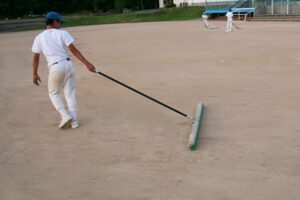
Relationship between pitch speed and pitching mechanics
In order to improve ball velocity, efficient pitching mechanics are crucial, not just throwing with force.
Here we will explain in detail the basics and applications of efficient pitching form and pitching mechanics.
What is an efficient pitching form?
An efficient pitching form is one in which all parts of the body work together in a coordinated manner to transfer maximum power to the ball.
The following elements are the foundation of an efficient pitching form:
-
Setup and BalanceThe first step to an efficient pitching form is proper setup and balance. Before starting the pitching motion, stand on the mound with your feet shoulder-width apart and relaxed. Balance at this point is important and will be the foundation for a smooth start to the pitching motion.
-
Stable release pointThe release point is the position at the moment the ball leaves your hand, and having a stable release point is directly related to ball speed and control. By keeping your arm swing constant and your release point in the same position every time, you can pitch efficiently.
-
Stride length and direction A stride is the length of a step forward. The length and direction of a stride affect the power and control of a pitcher. A proper stride allows for smooth weight transfer and efficient transfer of power from the lower body to the upper body. The ideal stride direction is to step straight toward the catcher’s mitt.
-
Weight transfer and rotation movement Weight transfer and trunk rotation are important in pitching. A smooth weight transfer from the lower to upper body and rotation of the hips and shoulders will result in a powerful pitch. In particular, by being conscious of shifting your weight from back to front while simultaneously rotating your hips and shoulders, you can transmit power efficiently.
Pitching mechanics basics and application
Pitching mechanics are the techniques used to improve the continuity and efficiency of the entire pitching motion.
Below we will explain some basic pitching mechanics and how to apply them.
-
Stance and set position Stance is the position of your feet and your posture when you start your pitching motion. In the set position, you should stand with your feet shoulder-width apart, your weight evenly distributed and relaxed. This will help you start your pitching motion smoothly.
-
Leg kick and weight transfer The leg kick is the action of lifting one leg high in the throwing motion. This action prepares the body to transfer its weight from back to front. Weight transfer is an important process that transfers the power of the lower body to the upper body by smoothly moving from the back foot to the front foot.
-
Arm action Arm action is the movement of swinging the arm during the pitching motion. Raise your elbow high and swing your arm down while keeping your shoulder and elbow in the same position. Release the ball using a snap of the wrist, allowing you to transfer maximum power to the ball.
-
Release and follow-throughThe release is the moment the ball leaves your hand. It is important that the release point is stable and in the best position to transmit maximum power to the ball. The follow-through is the movement of the arms and body after the release, and is important for maintaining balance throughout the entire pitching motion. By following through properly, you can reduce strain on your shoulders and elbows and reduce the risk of injury.
-
Application of pitching mechanics involves adjusting pitching form to suit each individual pitcher. For example, fine-tuning the release point height, stride length, and weight transfer timing can be used to maximize pitching efficiency and velocity. It is also effective to use video analysis and sensor technology to analyze pitching motion in detail and identify areas for improvement.
Efficient pitching mechanics not only improve velocity, but also improve control and prevent injuries.
By mastering these techniques, pitchers will be able to perform at a higher level.

The impact of the fastest pitch speed and future prospects
The fastest pitch speed is one of the factors that greatly influences a baseball game.
Here, we will take a closer look at the impact that the fastest pitch speed has on a game, as well as the possibility and expectations for future pitch speed records to be broken.
How does the fastest pitch speed affect the game?
-
Pressure on the batter The fastest pitch puts a lot of pressure on the batter. To hit a fastball, the batter must react instantly, which increases the chances of a missed shot or a strikeout. In particular, a fastball over 100 mph (about 160 km/h) shortens the batter’s reaction time to the limit, making it difficult to make accurate contact.
-
Pitcher Advantage A pitcher with a high-speed ball can have an advantage in a game. Breaking balls become more effective when batters are on guard to deal with a fastball. A combination of a four-seam fastball with a changeup or curveball confuses batters and creates favorable conditions for the pitcher.
-
Game Strategy The pitcher with the fastest pitch also plays an important role in game strategy. Using him as a closer or setup man is effective in holding down the opponent in important situations at the end of the game. Also, as a starting pitcher, he can use his fastball to control the flow of the game early on.
-
Excitement of the Spectators Fastballs are also an attractive element for spectators. When watching a game at the stadium, the moment when a pitcher records the fastest pitch speed evokes loud cheers and excitement. In particular, the moment when a historic fastest pitch speed record is broken becomes an unforgettable memory for many fans.
Possibilities and expectations for future pitch speed records
-
The evolution of training techniques in recent years has greatly contributed to the improvement of pitcher’s pitching speed. By using scientific training methods and the latest training equipment, it is possible to maximize the strength and flexibility of pitchers. This will lead to further improvements in pitching speed records.
-
Data analysis and improved pitching mechanics Advances in data analysis technology have made it possible to analyze pitchers’ pitching mechanics in detail. This allows pitchers to develop an efficient pitching form, which leads to improved ball speed. Video analysis and training using sensors have been extremely effective in improving pitchers’ form.
-
The rise of young pitchers In recent years, young pitchers with the fastest pitching speeds have been appearing one after another. They receive advanced training from an early stage and have been attracting attention even before they turn professional. As young pitchers grow, it is expected that pitching speed records will be broken.
-
Technological innovation and new approaches The introduction of new technologies and approaches also helps to break pitch velocity records. For example, technological innovations in various fields, such as research into biomechanics and the development of gloves and uniforms made from new materials, are contributing to improving pitcher performance.
-
Success in international competitions Success in international competitions is also a motivation to break the fastest pitch speed record. By performing at your best in a competition where the best pitchers from around the world gather, you may set a new pitch speed record.
The record for the fastest pitch speed continues to be updated every year, and further improvements are expected in the future.
With many factors coming together, such as advances in training techniques and data analysis, and the emergence of young pitchers, there is no doubt that a new fastest pitch record will be set in the future of baseball.
As a fan, it will be even more fun to witness these moments.
